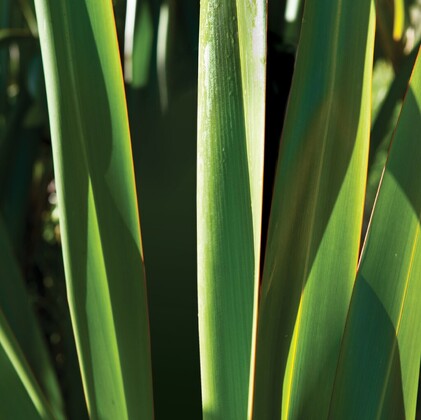Harakeke
Flax species
Common flax grows up to three metres high and its flower stalks can reach up to four metres. It has seedpods that stand upright from the stems.
Mountain flax never grows as large as common flax, rarely reaching more than 1.6 metres high, and its seedpods hang down.
Within the two flax species, there are numerous different varieties of flax. Some have drooping, floppy leaves while others grow as stiff and upright as spears. Flax flowers can vary in colour from yellow to red to orange.

Threats
Flax is generally a very common plant throughout New Zealand, but many of the special forms that were cultivated by Māori for weaving were nearly lost during the twentieth century.
Luckily, a few growers maintained their collections of special flaxes over the years. These cultivars have been in strong demand again due to a revival of interest in flax weaving over the last 20 years. Landcare Research now holds national collections of the unique cultivars and distributes plants to weaving groups and marae throughout the country.
Facts
Flax is unique to New Zealand and is one of our most ancient plant species.
Flax bushes will often support a large community of animals, providing shelter and an abundant food resource.
Tui, bellbirds/ korimako, saddlebacks/tīeke, short tailed bats/pekapeka, geckos and several types of insects enjoy nectar from the flax flower.
Flax snails, a rare land snail living only in the Far North, often shelter under flax bushes. These snails don’t eat any part of the flax, but rather they munch on fallen leaves from native broadleaved trees.
Harakeke was the name given to this plant by Māori.
The first European traders called it ‘flax’ because its fibres were similar to that of true flax found in other parts of the world.
Although we still call it flax today, harakeke is really a lily.
With thanks to the Department Of Conservation as the source for this information and images
